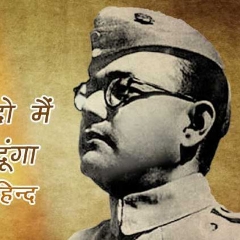Question 1 :
A system consists of N particles, which have independent K relations among one another. The number of degrees of freedom of the system is given by :
Question 4 :
The number of degrees of freedom in an oxygen molecule is
Question 5 :
Assertion: Rate of diffusion of a gas is inversely proportional to the square rate of its density
Reason: Hydrogen is the lightest gas known. so it diffuses most readily
Question 6 :
A polyatomic gas with n degrees of freedom has a mean energy per molecules given by :
Question 8 :
Gas exerts pressure on the walls of container because the molecules-
Question 9 :
<p class="wysiwyg-text-align-left">For perfect gas, the ratio of volume coefficient of expansion to pressure coefficient is :<br/></p>
Question 10 :
The value of universal gas constant is $8.3\ J/mole/K$, the mean kinetic energy of $32gm$ of oxygen at $-73^oC$ will be
Question 11 :
A gas has an average speed of $10 m/s$ and an average time of $0.1 s$ between collisions. What is its mean free path?<br/>
Question 13 :
The internal energy of air in a room of volume 50 m$^3$ at atmospheric pressure will be
Question 14 :
Reducing the pressure from $1.0$ atm to $0.5$ atm would change the number of molecules in one mole of ammonia to?
Question 15 :
Energy of all molecules of a monatomic gas having a volume $V$ and pressure $P$ is $\displaystyle\frac{3}{2}\:PV$. The total translational kinetic energy of all molecules of a diatomic gas at the same volume and pressure is
Question 16 :
State whether true or false:Mean free path order for some gases at 273 K and 1 atm P is<br/>$He > H_2 > O_2 > N_2 > CO_2$
Question 17 :
A quantity of $10$g of a gas at $1$ atm pressure is cooled from $273^o$C to $273$K keeping its volume constant, the final pressure of the gas will be?
Question 18 :
$3$ mole of gas ''X" and $2$ moles of gas "Y" enters from end "P" and "Q" of the cylinder respectively. The cylinder has the area of cross section , shown as <br>under <br>The length of the cylinder is $150cm$. The gas "X" intermixes with gas "Y" at the point . If the molecular weight of the gases X and Y is $20$ and $80$ respectively, then what will be the distance of point A from Q?
Question 19 :
The maximum speed of the molecules of a gas in a vessel is $400\ m/s$. If half of the gas leaks out, at constant temperature, the $rms$ speed of the remaining molecules will be-
Question 20 :
The de-Broglie wavelength of a particle accelerated with $150\ volt$ potential is $10^{-10}\ m$. If it accelerated by $600\ volts$ p.d. its wavelength will be
Question 21 :
The kinetic energy of $ 1g $ molecule of a gas at normal temperature and pressure is :<br/>
Question 22 :
The heat capacity at constant volume of a sample of a monoatomic gas is $35\ J/K$. Find the number of moles.
Question 23 :
An ideal monoatomic gas $(C_{v}=1.5\ R)$ initially at $298$ K and $1.013$ atm expands adiabatically irreversibly until it is in equilibrium with a constant external pressure of $0.1013$ atm. The final temperature (in Kelvin) of the gas is :
Question 24 :
The equation of a certain gas can be written as $\dfrac {T^{7/5}}{P^{2/5}}=constant$. Its specific heat at constant volume will be :
Question 25 :
How many degrees of freedom have the gas molecules if at S.T.P the gas density is 1.3 kg/m$^{3}$ and the velocity of sound in the gas is 330 m/sec?
Question 26 :
<b>A vessel of volume $0.3 \ { { m }^{ 3 } }$ contains Helium at $20.0$. The average kinetic energy per molecule for the gas is:</b>
Question 27 :
One mole each of monatomic, diatomic and triatomic ideal gases (kept in three different containers) whose initial volume and pressure are same, each is compressed till their pressure becomes twice the initial pressure. Then which of the following statements is/are incorrect?<br/>
Question 28 :
For silver , $C_p(JK^{-1}mol^{-1})=23+0.01T$. If the temperature (T) of 3 moles of silver is raised from $300K$ to $1000K$ at $1\ atm$ pressure, the value of $\Delta H$ will be close to: 
Question 29 :
The heat capacity of a certain amount of a particular gas at constant pressure is greater than that at constant volume by 29.1 J/K. Match the items given in Column I with the items given in Column II.<table class="wysiwyg-table"><tbody><tr><td>List 1</td><td>List 2</td></tr><tr><td>If the gas is monatomic, heat capacity at constant volume</td><td>131 J/K</td></tr><tr><td>If the gas monatomic, heat capacity at constant pressure</td><td>43.7 J/K</td></tr><tr><td>If the gas is rigid diatomic, heat capacity at constant pressure</td><td>72.7 J/K</td></tr><tr><td>If the gas is vibrating diatomic, heat capacity at constant pressure</td><td>102 J/K</td></tr></tbody></table>
Question 30 :
On heating 128 g of oxygen gas from 0$^{\circ}$C to 100$^{\circ}$C, $C_V$ and $C_P$ on an average are 5 and 7 cal mol$^{-1}$ degree$^{-1}$, the value of $\Delta$U and $\Delta$H are respectively :



















































